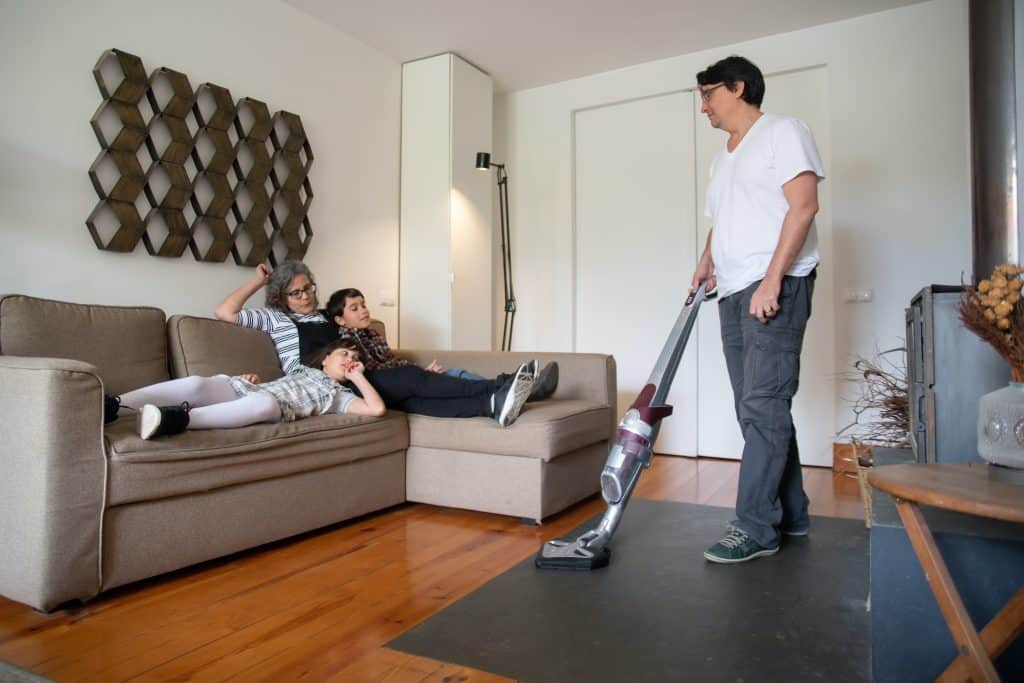Ah, the joy of clean carpets! As a parent, you’re no stranger to the endless stream of crumbs and toy remnants that somehow find their way to your living room floor. You’ve likely longed for the day your kids can help with the task. And that’s precisely what we’re here for. In this guide, we’ll break down the seemingly mammoth task of teaching your kids “how to vacuum” into manageable steps. Oh, and if your kiddo is more of a visual learner, we’ve covered you with our Goal Mine class video on the blog. It’s perfect for kids to learn this skill independently.
Table of Contents
| Step Number | Task | Key Points |
|---|---|---|
| 1 | Get the Vacuum | Understanding the machine Safety first Storage |
| 2 | Vacuum the Floor | Prepping the area Direction matters Holding the vacuum |
| 3 | Recheck Your Work | Inspect the area Emptying the dust bin or bag |
Step 1: Get the Vacuum
- Understanding the Machine: Firstly, acquaint your child with the vacuum cleaner. Explain its essential functions and controls. Now, that sounds like rocket science, but in other words, make it a fun show-and-tell session. Explain the on/off button, the cord rewind (if there is one), and the importance of the dust bin or bag.
- Safety First: Safety should always come first. Before letting them handle it, discuss the don’ts. For instance, no vacuuming of small toys or, heaven forbid, their hair. Likewise, teach them to always unplug the vacuum when done.
- Storage: Above all, show them where the vacuum is stored. Make it a game where, after using it, they have to return it to its “home.”
Read more: How to Fold Pants for Kids
Step 2: Vacuum the Floor
- Prepping the Area: However fun it might sound to vacuum over toys, it’s not the best idea. Teach your kids to pick up more oversized items from the floor before vacuuming. The floor should be free of any obstacles that might harm the vacuum.
- Direction Matters: When it comes to vacuuming, direction is critical. Teach them to start from a corner and work towards the room’s exit. In addition, advise them to go over the same spot a couple of times to ensure cleanliness. Similarly, explain the importance of overlapping strokes for thorough cleaning.
- Holding the Vacuum: For smaller kids, the vacuum might seem like a beast. But with the right approach, they’ll be vacuuming like pros. Teach them to hold the handle firmly and guide it with ease. Moreover, they should be taught to push forward with the machine and pull back slowly for a better clean.

Read more: Teaching Your Kid How to Mop the Floor
Step 3: Recheck Your Work
- Inspect the Area: After your child has vacuumed, could you encourage them to inspect their work? Similarly, teach them the importance of taking pride in their work. Please point out any missed spots and ask them to review them again. Indeed, mistakes will happen, but they’re also the best learning opportunities.
- Emptying the dustbin or Bag: Now, this might not be for the tiniest of our cleaners, but for the older kids, teach them the importance of emptying the vacuum after use. It’s all part of the job. Above all, it’s a great way to teach responsibility.

Goally | Best Videos to Teach Life Skills
Give your kid an independent future. Goally has 100+ video classes teaching life skills like “How to Choose a Restaurant,” “How to Interrupt Politely,” and “How to Get Ready for School.”
Goally takes kids on an adventure that includes interactive practice and checkpoints along the way! No web browsers, YouTube, or social media.
There’s something gratifying about seeing your child accomplish a task independently, especially one that’s genuinely helpful around the house. By teaching them how to vacuum, you are instilling a sense of responsibility and the value of hard work and cleanliness. And hey, if your child enjoyed this lesson, we have a range of similar lessons waiting for them. Check out Goally’s dedicated Tablet to unlock the rest of the video lessons that delve deeper into “how to vacuum.” The embedded YouTube video you see here only covers step #1, but there’s much more to explore and learn. Most importantly, remember that every little step counts. Happy vacuuming!

Goally
We help parents teach their kids life skills, like doing bedtime and morning independently. Backed by science, we incorporate evidence-based practices and expert-informed designs in all of our apps and content.





